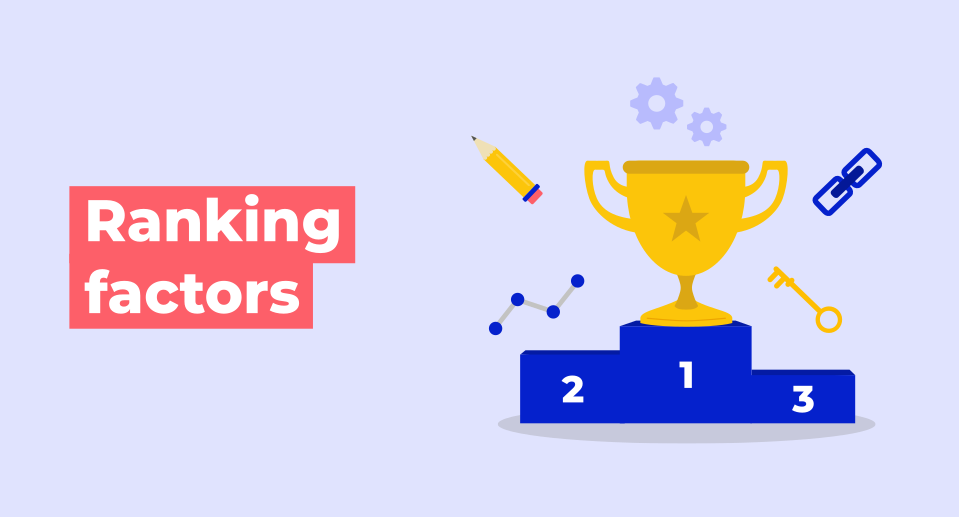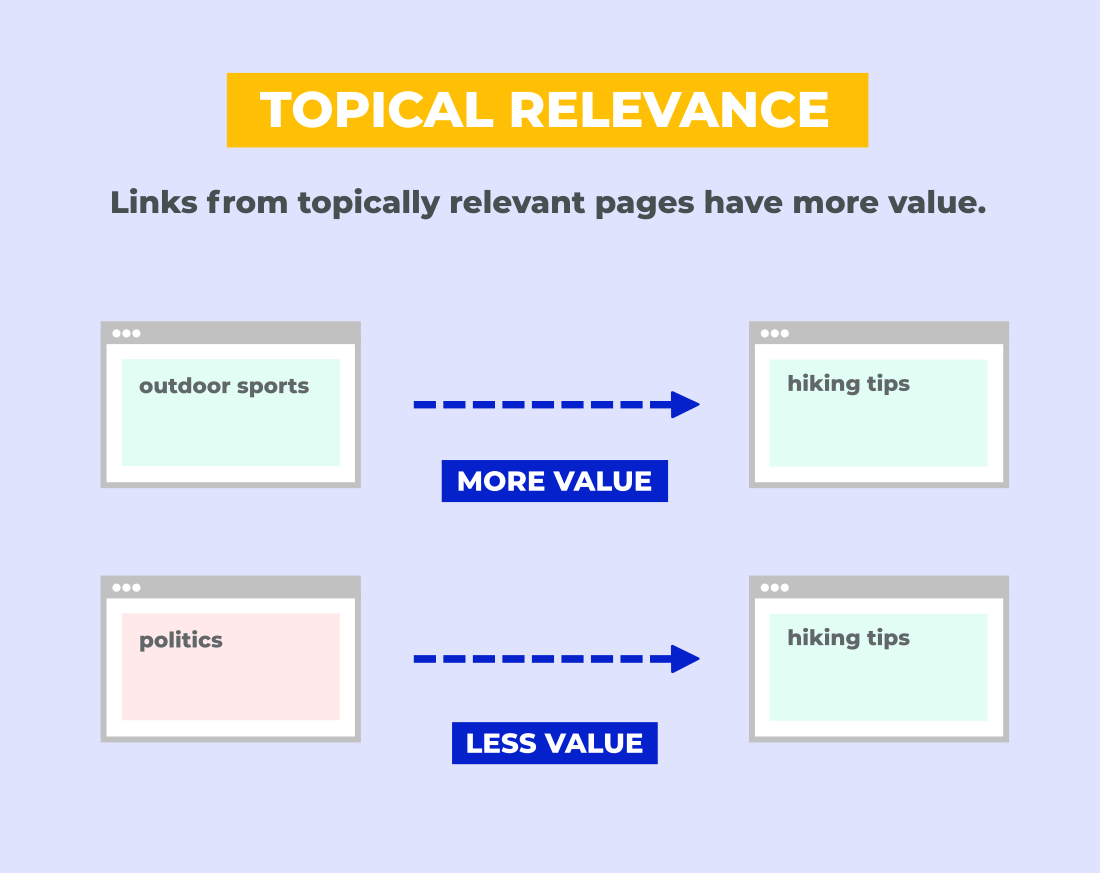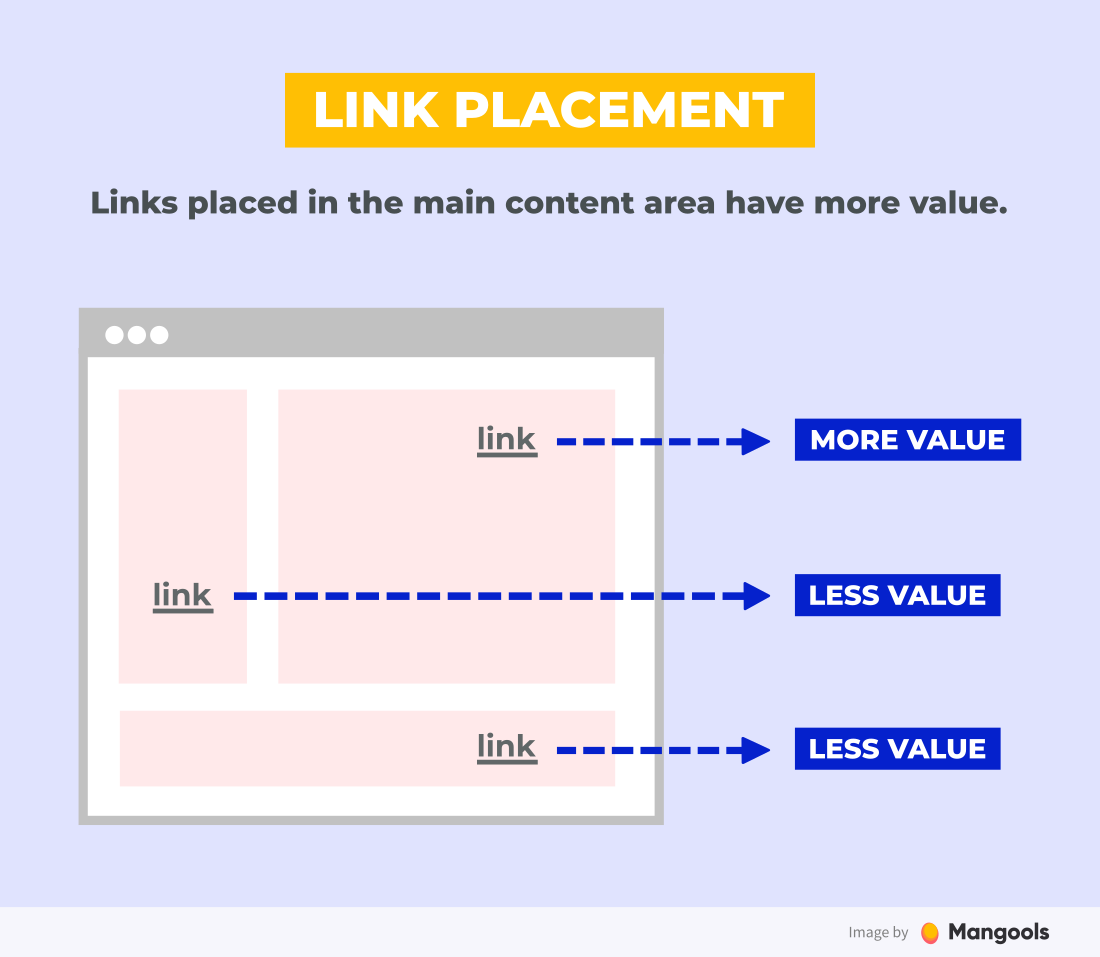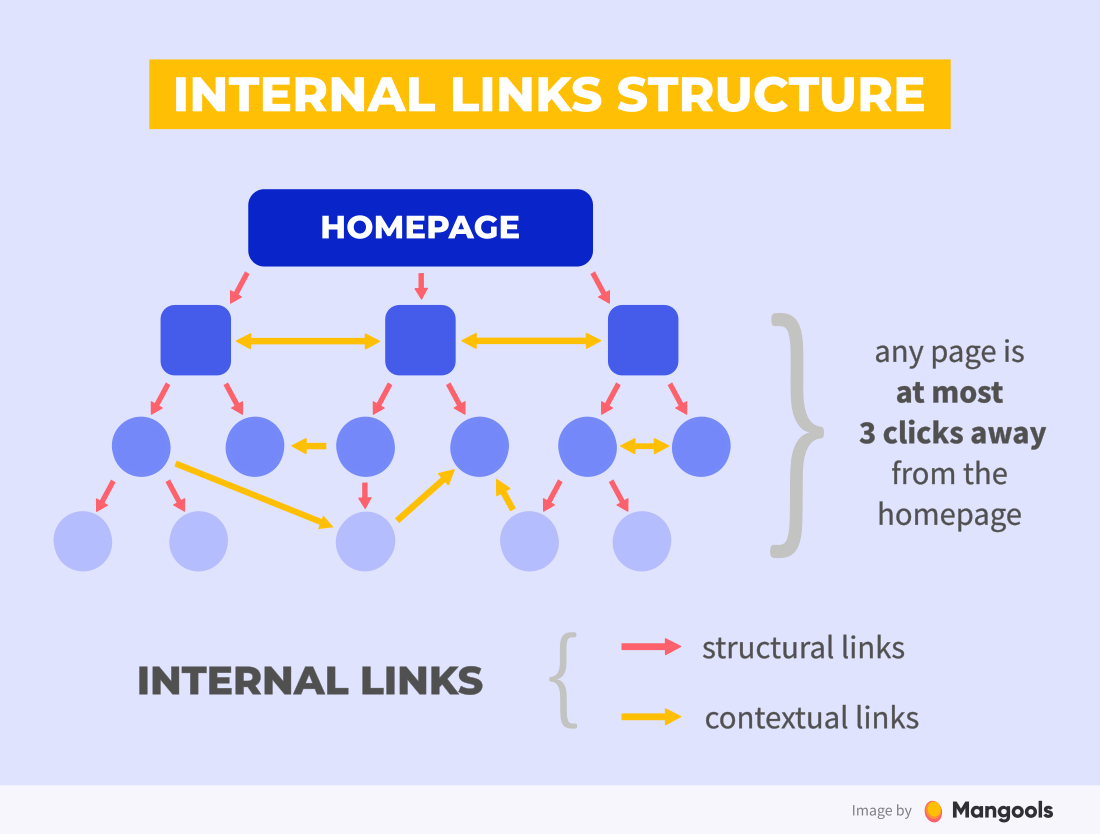Knowing the key ranking factors is essential if you want to understand SEO.
Although some ranking signals are still shrouded in Google’s mystery, many of them are well-established and confirmed by Google’s officials.
Let’s find out what these factors are and how they work.
What are ranking factors?
Ranking factors are signals search engines use to sort the search results according to their quality and relevance to the particular query.
Search engine optimization is basically optimizing the websites according to these signals in order to improve the rankings.
Google uses hundreds of ranking signals, with many variables. Each signal may or may not be used by Google for ranking purposes or might be slightly less or more important depending on the search query or the search results.
Or, as John Mueller stated:
We’ve kind of moved away from the “over 200 ranking signals” number, because it feels like even having a number like that is kind of misleading in the sense that:
“Oh, Google has a spreadsheet with all of the ranking signals and they can just sort them by importance and tell me which ones they are.”
And that’s definitely not the case.
Correlation vs. causation
There are a number of studies that are trying to prove (or disprove) the existence of some ranking factors just by tweaking or making changes on the website that would correlate with its ranking changes in the Google Search.
These kinds of correlation studies often led to so much misinformation that even Google representatives started to joke about correlations:
I went to NYC, weather turned bad. Came to Las Vegas, started to rain and it's cold. Causation or correlation?
— Gary 鯨理/경리 Illyes (so official, trust me) (@methode) October 5, 2015
For example, some correlation studies found out that longer posts tend to rank better as search results – which led to the popular belief that the word count is a ranking signal for Google.
But is it really? Most probably not.
The more logical explanation is that:
- longer posts tend to be more comprehensive, which improves their relevance and relevance causes better rankings
- the high word count is just a natural by-product of the content being more comprehensive and relevant, which means it correlates with high rankings but does not cause them
To assume that there is some magical number of words you must use (or even worse, that the more words you use, the better rankings you’ll get) would be a big misunderstanding of the concept.
Even John Mueller, Search Advocate at Google dismissed word count as a ranking signal:
Word count is not a ranking factor.
— John Mueller (official) · #StaplerLife (@JohnMu) February 2, 2021
1. Backlinks
Backlinks are the most well-known ranking signal in SEO – that was confirmed many many times by Google representatives.
Although Google is trying to put less emphasis on backlinks over the years, they still play a very important role in Google’s algorithm.
That being said, backlinks are not created equal. Some have a higher value than others for the search engine. Here are the most important attributes of a valuable backlink:
- Relevance of the backlink
- Authority of the linking page
- Position of the backlink
- Anchor text of the backlink
Let’s take a closer look at each of these signals individually.
Link relevance
Link relevance is an important signal that tells Google that your website can be a good search result for the particular queries since other relevant websites are linking to you.
By having backlinks from sites that are topically similar to yours, the search engine might consider your pages as valuable results for the given topic or niche.
For example, if you have a page about “hiking tips”, a backlink from a page that is about “outdoor sports” is more valuable than a backlink that is from, let’s say, “politics” webpage.
Even Matt Cutts stated that:
“…at least for now, backlink relevance still really helps in terms of making sure that we return the best, most relevant, most topical set of search results.”
Authority of the linking page
Google uses various signals for the website to determine its “authority” in Google Search:
“For the most part, we do try to understand the content and the context of the pages individually to show them properly in search. There are some things where we do look at a website overall though.” (John Mueller)
To be clear, Google does not use a metric that would measure the “domain authority” per se. This was explicitly stated by webmaster trends analyst, Gary Illyes:
we don't really have "overall domain authority". A text link with anchor text is better though
— Gary 鯨理/경리 Illyes (so official, trust me) (@methode) October 27, 2016
On the other hand, Google does use a specific algorithm as a signal that determines the relative importance of the web page in Google Search – PageRank.
Generally speaking, the PageRank algorithm is based on the 3 important signals that influence its value:
- the number of backlinks
- the number of links on the linking page
- the PageRank of the linking page
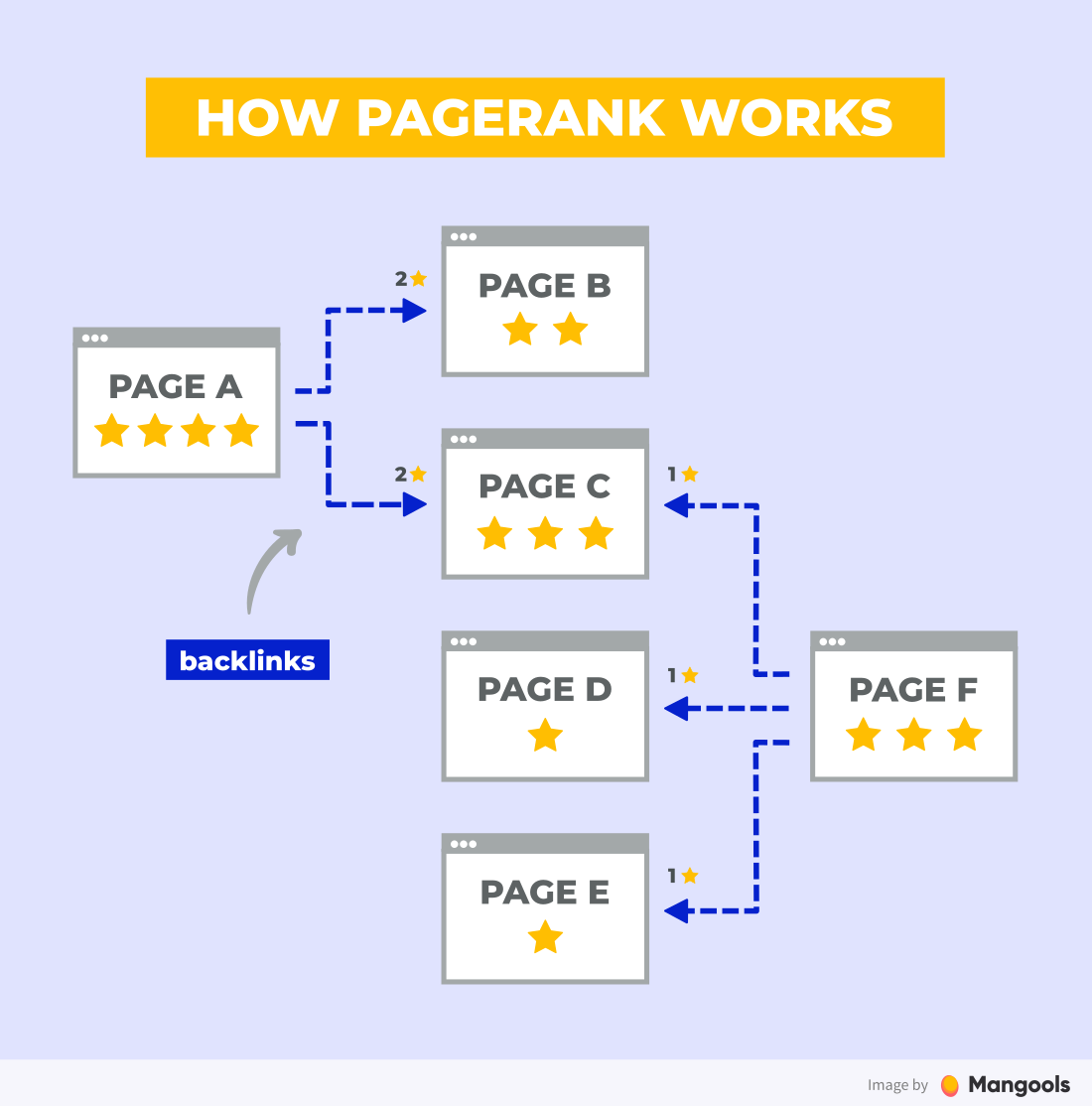 Although there is no official available metric by Google thanks to which it would be possible to measure the PageRank of the website, there are a few industry-standard metrics that may come close its value:
Although there is no official available metric by Google thanks to which it would be possible to measure the PageRank of the website, there are a few industry-standard metrics that may come close its value:
- Domain Authority (DA) and Page Authority (PA) – a relative metrics developed by MOZ that serve as industry standards in SEO
- Citation Flow (CF) and Trust Flow (TF) – score metrics that are trademarks of Majestic. CF/TF predicts the popularity, influence, and trustworthiness of URLs based on the number of linking sites, their quality as well as their “link distance”
- Number of referring domains – a simple metric that measures the number of unique linking domains
Anchor text
Anchor text provides contextual information about the linked page and serves as a ranking signal for the search engine.
It can tell Google what the linked page is about – if many links are pointing to the page with the same or similar anchor text, the search engine can assume that the content of the page is relevant for that keyword.
Even Google’s official SEO starter guide states:
“…the better your anchor text is, the easier it is for users to navigate and for Google to understand what the page you’re linking to is about“
Link placement
Google evaluates links based on their position on the webpage.
Links in the main content might be more relevant for the search engine as opposed to the links at the sidebar or the footer – this can be applied to the internal as well as to the external links.
Or as Zineb Ait, Program Manager at Google stated:
“The sitewide header and footer links are not a very great weight in general.“
2. Content relevance
Relevance of the content is one of the most important ranking signals for Google’s algorithm.
The search engine tries to understand the content on your webpage and determine whether or not it might be relevant for some particular search query.
Google’s ranking algorithm uses many small relevance signals to better understand the content on the page. The most common one is – keyword on the page:
“The most basic signal that information is relevant is when a webpage contains the same keywords as your search query.”
Of course, just having relevant keywords in the body of your page by itself does not improve its rankings – Google looks on other places as well when evaluating the relevance of the content.
Furthermore, including keywords unnaturally into your pages may lead to keyword stuffing.
Keyword stuffing
Keyword stuffing is a practice of spamming keywords on the page in order to manipulate the ranking of that page.
In the past, many website owners tried to improve their website’s ranking by repeating or including various keywords on their pages without any context or additional value.
Nowadays, Google can quickly recognize this spammy technique and ignore (or even block) those pages from the search results.
Our systems are built to ignore keyword stuffing. Sites can still rank despite using keyword stuffing. Many sites follow old, outdated, bad advice, but are still reasonable sites for users, and search.
— John Mueller (official) · #StaplerLife (@JohnMu) October 20, 2020
With content relevance in mind, here are a few ranking signals that may help search engine better understand the site’s content.
Title tag
Title tags may help search engines to better understand the content on the page and improve its ranking for the relevant search queries.
By including the focus keyword in the title tag, users, as well as Google, can quickly get an idea about the page and how it is relevant for a particular search query.
On the other hand, HTML tags like these are not the most important ranking factor for Google – do not expect a dramatic ranking boost to your pages just by including relevant keywords in your title tags.
“We do use (the title tag) for ranking, but it’s not the most critical part of a page.“
Headings
Headings (H1, H2, etc.) on a page give Google additional information about the content.
By including important keywords into the headings, the search engine can better understand what individual sections of the page are about.
It was confirmed even by John Mueller:
“… when it comes to text on a page, a heading is a really strong signal telling us this part of the page is about this topic.”
Alt text
The alt text is an important ranking signal for the search engine – especially for Google Images search.
By optimizing your alt texts, Google can better understand what is on your images and for which queries should be displayed in Google Images.
Although it is not mandatory to write alt texts for all your images (e.g. illustrations, decorative pictures, etc.), it is always better to provide at least some context to the pictures – not only for the search engine but also for the visually impaired users.
Or as Gary Illyes from Google stated:
Imo if the text around the image is relevant, leaving the alt attributes blank is sorta ok. Search engines would absolutely have less data from where they can infer what the image is about so at least in some cases that might have significant impact on Google Images traffic.
— Gary 鯨理/경리 Illyes (so official, trust me) (@methode) May 29, 2019
Keyword in the URL
Focus keyword in the URL of the page may serve as a ranking factor – it makes the URL more user-friendly and relevant for the search engine.
On the other, it is a very insignificant signal for Google – do not focus on optimizing all your URLs just for the sake of better rankings.
Or as John Mueller stated:
“I believe that is a very small ranking factor. So it is not something I’d really try to force. And it is not something I’d say it is even worth your effort to restructure your site just so you can include keywords in your URL.”
RankBrain
Besides the relevancy signals mentioned above, Google also uses a special algorithm when evaluating the content relevance – RankBrain.
RankBrain is a part of Google’s ranking algorithm that helps search engines provide more relevant results to users – it tries to understand the meaning even behind the queries that were never typed before and guess what the user’s intent behind them is.
Or as Gary Illyes explained:
“RankBrain is a PR-sexy machine learning ranking component that uses historical search data to predict what would a user most likely click on for a previously unseen query.”
RankBrain is considered the 3rd most important ranking signal in Google’s algorithm – unfortunately, there is not a direct way to optimize your pages for this signal:
you optimize your content for users and thus for rankbrain. that hasn't changed
— Gary 鯨理/경리 Illyes (so official, trust me) (@methode) September 26, 2019
3. Content quality
High-quality and original content play an important role in Google’s ranking algorithm.
Although “quality content” is not a ranking factor per se, Google pays attention to various signals on the page that determine how good and original the content is – unfortunately, Google does not provide much information about what these quality signals are.
On the other hand, Google also uses human quality raters who help to review the content on the website according to their Search Quality Rater Guidelines.
These raters analyze the page content and provide feedback that is used in Google algorithm updates for ranking purposes:
“Search isn’t static. We’re constantly improving our algorithms to return better results and Search Quality Raters play an important role in the launch process.”
Search Quality Rater Guidelines measure “quality content” based on the concept called E-E-A-T:
- Experience – evaluates practical knowledge and know-how of the content creator
- Expertise – measures the competence and expertise of the source on the page.
- Authority – determines whether or not the content is the best source available
- Trustworthiness – measures how reliable the content is and whether it does not contain biased information.
Based on this concept, Quality Raters have to take a look at various elements on the webpage when evaluating its “quality” such as:
- Purpose of the website (e.g. to inform users, sell products, provide entertainment, etc.)
- Reputation of the website (e.g. user reviews, external articles and references about the website, recommendations from independent experts, etc.)
- The number of Ads or other distractions
- Influence of the content on people’s lives (the so-called YMYL content)
- The amount of main and supplementary content
Even though E-E-A-T is not a ranking factor technically speaking, Google uses various signals that are trying to reflect this concept in practice.
Or as Danny Sullivan stated:
Is E-A-T a ranking factor? Not if you mean there's some technical thing like with speed that we can measure directly.
We do use a variety of signals as a proxy to tell if content seems to match E-A-T as humans would assess it.
In that regard, yeah, it's a ranking factor.
— Danny Sullivan (@dannysullivan) October 11, 2019
4. Content freshness
New or regularly updated content is an important ranking signal for time-sensitive search queries.
Since the launch of Google’s freshness algorithm, pages with trending topics may get higher rankings if they were updated recently with new, interesting content.
This of course does not apply to all search results – Google can distinguish content that needs new information constantly as opposed to “evergreen” content.
Or as Matt Cutts explained:
“Google is relatively good about trying to suss out when it’s more helpful to be fresh and when it’s just … you know … sort of regular search where this – the web pages – that were good yesterday were also good today.”
So for example – for the search query “USA elections“, the user probably expects the last election candidacy – not the elections from 20 years ago.
On the other hand, content for the search query “how to make a pizza” does not need to be updated so often.
Therefore, depending on the search query, properly updated content may or may not get a boost in the SERP from Google.
5. Internal links
Internal linking (or structure) tells the search engine which parts of your website are more important as well as pass the link equity between the interlinked pages.
Google uses internal links between the pages not only for crawling and indexing purposes – but also as a signal that some pages are more important than others for the Google Search:
“The thing that you can do a little bit, though, within your website is to help us understand which parts of your website you consider to be the most important. And the best way to do that is with internal linking.” (John Mueller)
Furthermore, internal links pass the link equity (PageRank) among the pages:
We likes them. We treat them as normal links in e.g. PageRank computation
— Gary 鯨理/경리 Illyes (so official, trust me) (@methode) June 22, 2017
If you have a lot of relevant internal links with descriptive anchor texts pointing to your important pages, the search engine will consider them as very important – which can result in better rankings.
6. Mobile-friendliness
Optimization for mobile devices started to be a ranking signal in 2015 when Google announced a mobile-friendly update.
It even became a stronger signal in 2016 when Google rolled out another update that put more emphasis on mobile optimization.
From the practical standpoint, search engine checks if your site is displayed properly on mobile devices with fast loading and responsive design – if your site is mobile-friendly, it may get an advantage over the sites that are not.
Besides mobile-friendliness, optimization for mobile devices is important for another reason – Mobile-first indexing.
Mobile-first indexing is an update that was fully rolled out on March 05, 2020 – the purpose of this update was to use content primarily from the mobile version of websites for indexing and ranking purposes.
Although Mobile-first indexing is not a ranking signal, the content on your website will be analyzed and ranked by Google according to the mobile version of the site – not the desktop one.
7. Site security (HTTPS)
HTTPS encryption is a small ranking signal for the search engine that was announced by Google in 2014.
Although it does not provide many benefits in terms of ranking improvements, obtaining an SSL certificate for your website can provide at least some security for the users.
In other words:
Ranking wise it's a teeny tiny factor, very similar to https ranking boost. That particular one is not surprising. You do that primarily to enable users to convert.
— Gary 鯨理/경리 Illyes (so official, trust me) (@methode) April 28, 2020
8. Page speed
Page speed has been a well-known ranking signal since 2010 – it measures how fast are the pages loading to the users.
By improving the speed of your website, you can get a small boost in Google’s ranking algorithm as well as provide a better user experience on your pages
On the other hand, page speed is not the most crucial ranking factor:
“…it doesn’t carry as much weight as the relevance of a page“
Page speed is measured by a few small ranking signals called Core Web Vitals.
Core Web Vitals
Core Web Vitals are metrics that were announced by Google in May 2020 as a part of page experience signals.
The purpose of Core Web Vitals is to measure how good (or bad) is the experience for users on the webpage.
It comes with 3 metric that measures the user experience:
- Largest Contentful Paint (LCP) – measures how fast is the biggest block of text, image, or any other element displayed (or rendered) during the first loading.
- First Input Delay (FID) – measures the time between the user’s interaction on the webpage (e.g. clicking on the link button) to the time when the browser starts to process the interaction.
- Cumulative Layout Shift (CLS) – measures how much or how often the page unexpectedly changes any visible element or layout from the time when it was displayed.
Core Web Vitals are not the most important ranking signals – they are just part of the Page Experience that takes into account many other aspects as well – Mobile-Friendly signals, HTTPS-security, Intrusive Interstitials, etc.
Or as John Mueller explained:
“…relevance is still by far much more important. So just because your website is faster with regards to Core Web Vitals than some competitors, doesn’t necessarily mean that …you will jump to position number one in the search results.”
BONUS: Local SEO factors
Here are a few small ranking signals that play a role in the local search queries:
- Google Business Profile – filling up the information about your business and verifying its location helps Google to decide if or when should your business be displayed for the local search queries.
- Country-code top level domain names (ccTLDs) – country code at the end of the domain (e.g. “.de” for Germany or “.uk” for England) indicates Google that the website is intended for people from a particular country or region.
- Server location – although the IP address of the server is not so strong of a signal as it used to be, it still may serve as a small ranking signal for the local search queries.


